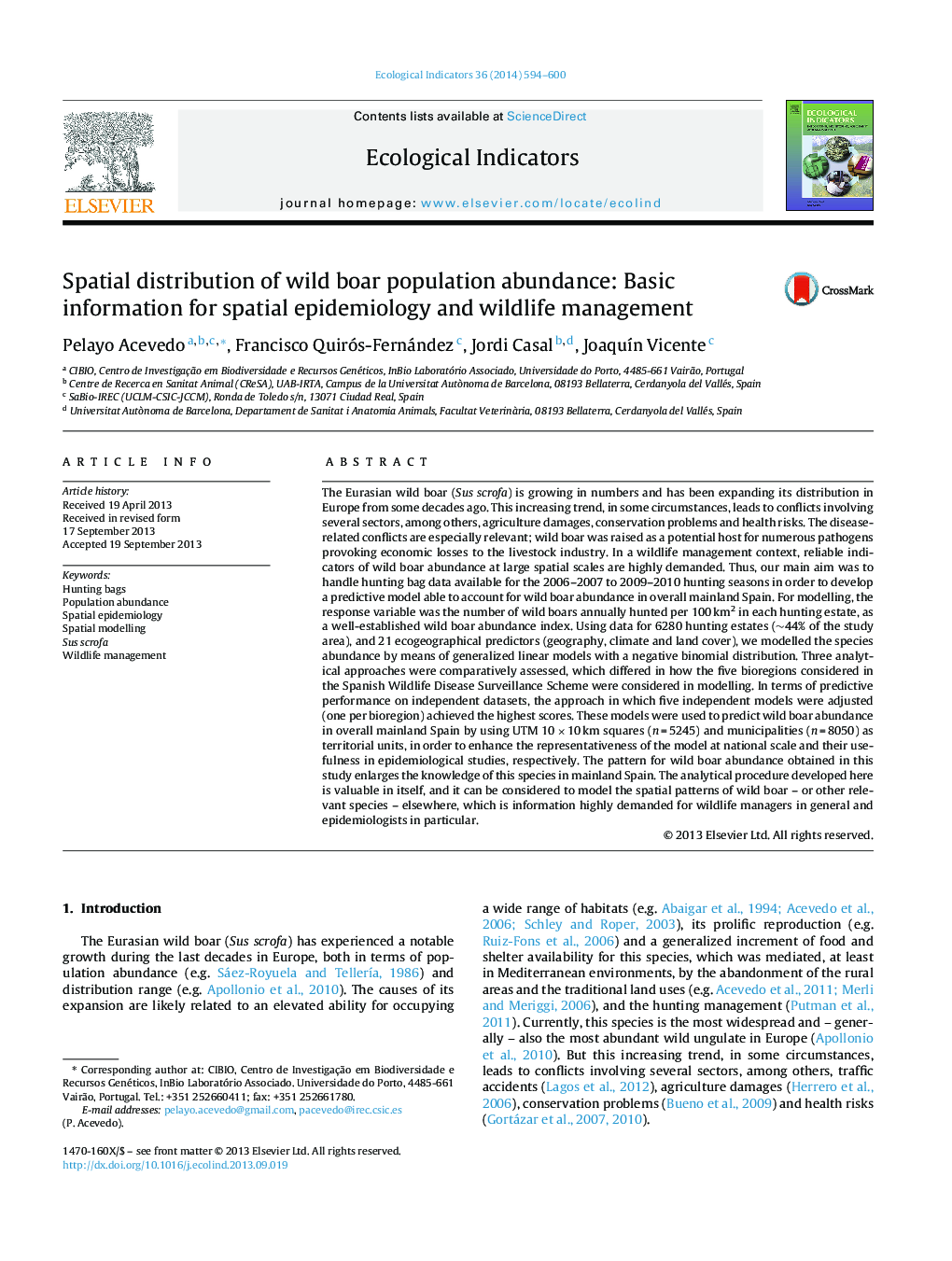| کد مقاله | کد نشریه | سال انتشار | مقاله انگلیسی | نسخه تمام متن |
|---|---|---|---|---|
| 4373354 | 1617164 | 2014 | 7 صفحه PDF | دانلود رایگان |
The Eurasian wild boar (Sus scrofa) is growing in numbers and has been expanding its distribution in Europe from some decades ago. This increasing trend, in some circumstances, leads to conflicts involving several sectors, among others, agriculture damages, conservation problems and health risks. The disease-related conflicts are especially relevant; wild boar was raised as a potential host for numerous pathogens provoking economic losses to the livestock industry. In a wildlife management context, reliable indicators of wild boar abundance at large spatial scales are highly demanded. Thus, our main aim was to handle hunting bag data available for the 2006–2007 to 2009–2010 hunting seasons in order to develop a predictive model able to account for wild boar abundance in overall mainland Spain. For modelling, the response variable was the number of wild boars annually hunted per 100 km2 in each hunting estate, as a well-established wild boar abundance index. Using data for 6280 hunting estates (∼44% of the study area), and 21 ecogeographical predictors (geography, climate and land cover), we modelled the species abundance by means of generalized linear models with a negative binomial distribution. Three analytical approaches were comparatively assessed, which differed in how the five bioregions considered in the Spanish Wildlife Disease Surveillance Scheme were considered in modelling. In terms of predictive performance on independent datasets, the approach in which five independent models were adjusted (one per bioregion) achieved the highest scores. These models were used to predict wild boar abundance in overall mainland Spain by using UTM 10 × 10 km squares (n = 5245) and municipalities (n = 8050) as territorial units, in order to enhance the representativeness of the model at national scale and their usefulness in epidemiological studies, respectively. The pattern for wild boar abundance obtained in this study enlarges the knowledge of this species in mainland Spain. The analytical procedure developed here is valuable in itself, and it can be considered to model the spatial patterns of wild boar – or other relevant species – elsewhere, which is information highly demanded for wildlife managers in general and epidemiologists in particular.
Journal: Ecological Indicators - Volume 36, January 2014, Pages 594–600
